100% ólommentes védelem röntgensugárzás ellen a Scatter Armor védőpajzsokkal
Scatter Armor Védőpajzs
Transradialis behatolás: bal és jobb arteria radialis punctio, shuntok, biliáris drainage, gerincsebészet, fibroid embolizáció
- különböző méretekben és kivágásokkal
- egyesével csomagolva és sterilizálva
- 100% ólommentes, egyszerű kezelhetőség
Szórt röntgensugárzás elleni védelem
A Scatter Armor védőpajzsok szórt sugárzás elleni védelmet nyújtanak radialis punctió és sok egyéb eljárás esetében.
A kétrétegű KIARMOR a leghatásosabb technológia a szórt röntgensugárzás elleni védelemben.
Hogyan működik
A steril Scatter Armor védőpajzsot a páciens testére helyezik a szórt sugárzás terjedésének megakadályozása érdekében, létrehozva egy szóródásmentes zónát, csökkentve az orvos vagy klinikus káros sugárterhelését.
Egyszer használatos
A Scatter Armor védőpajzs ólom- és latexmentes, eldobható.
Steril
Egyesével, sterilen csomagolt. Szükség szerint újrasterilizálható (EO Gas Method).
Minden felülethez
Scatter Armor védőpajzs hozzásimul a rögzítési felülethez a könnyű használat és a maximális védelem érdekében.


Különböző méretben és minden típusú beavatkozáshoz:
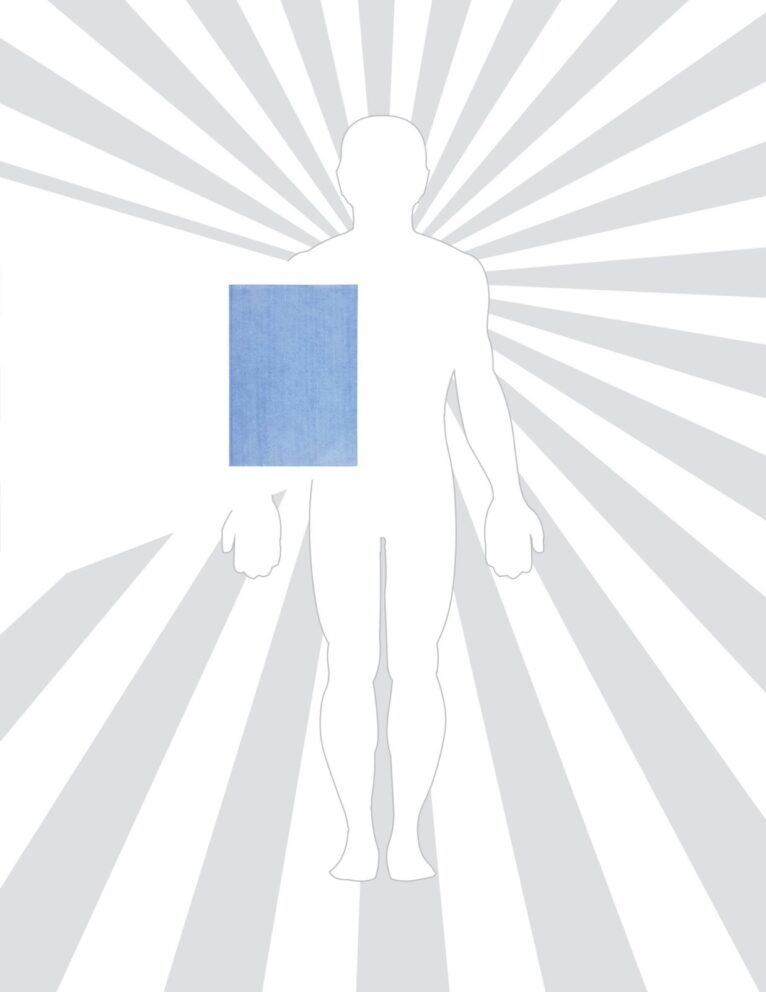
Scatter Armor Multipurpose Shield
Méret: 30,5 x 43,2 cm
Ablak kivágás nélkül
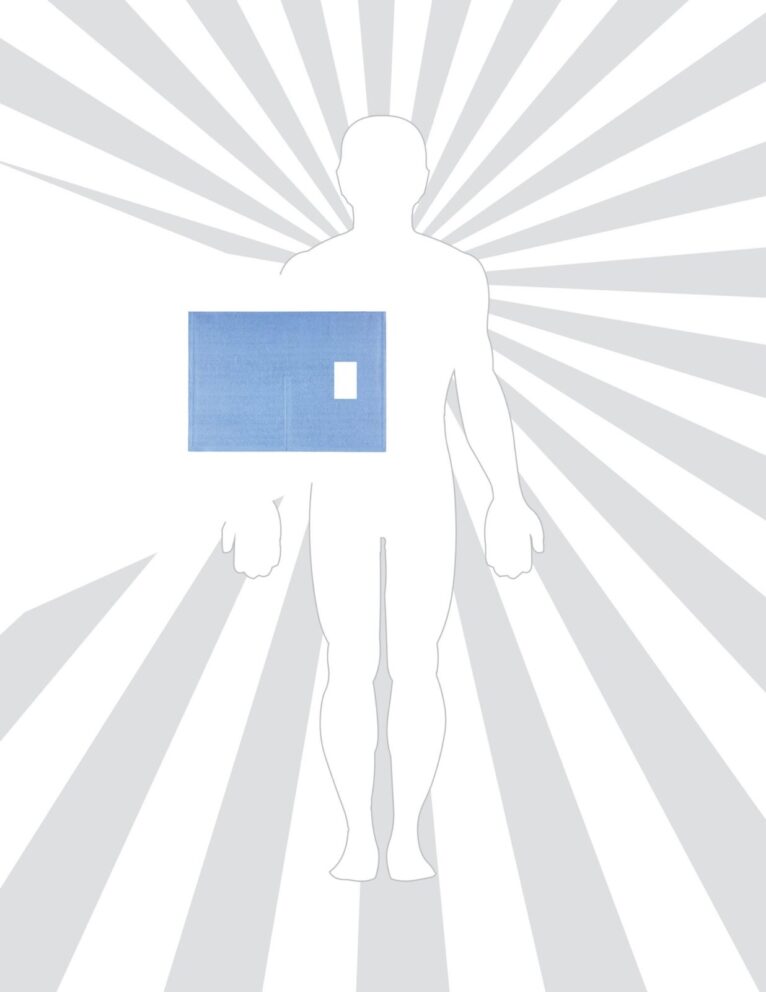
Multipurpose Shield with Fenestration
Méret: 30,4 cm x 43,1 cm
Ablak méretei: 8,9 x 5,1 cm
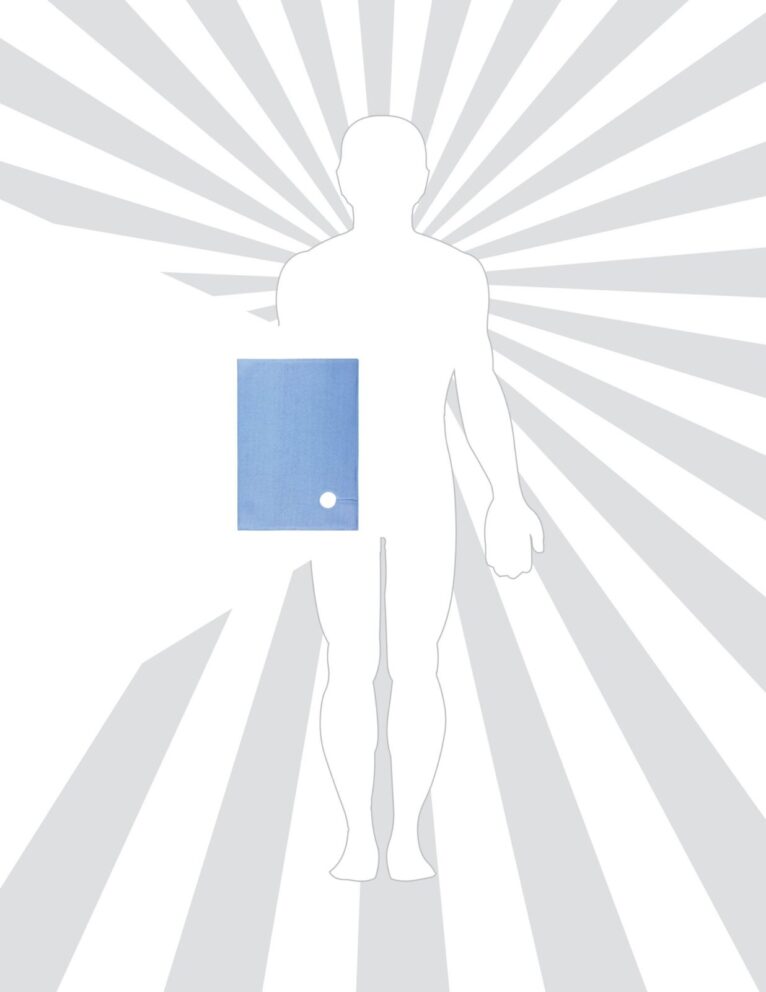
Scatter Armor Angiography Shield
Méret: 30,4 cm x 43,1 cm
Kerek ablak átmérője: 3,8 cm

Scatter Armor Peripheral Shield
Méret: 86,3 x 30,4 cm
Ablak nélkül
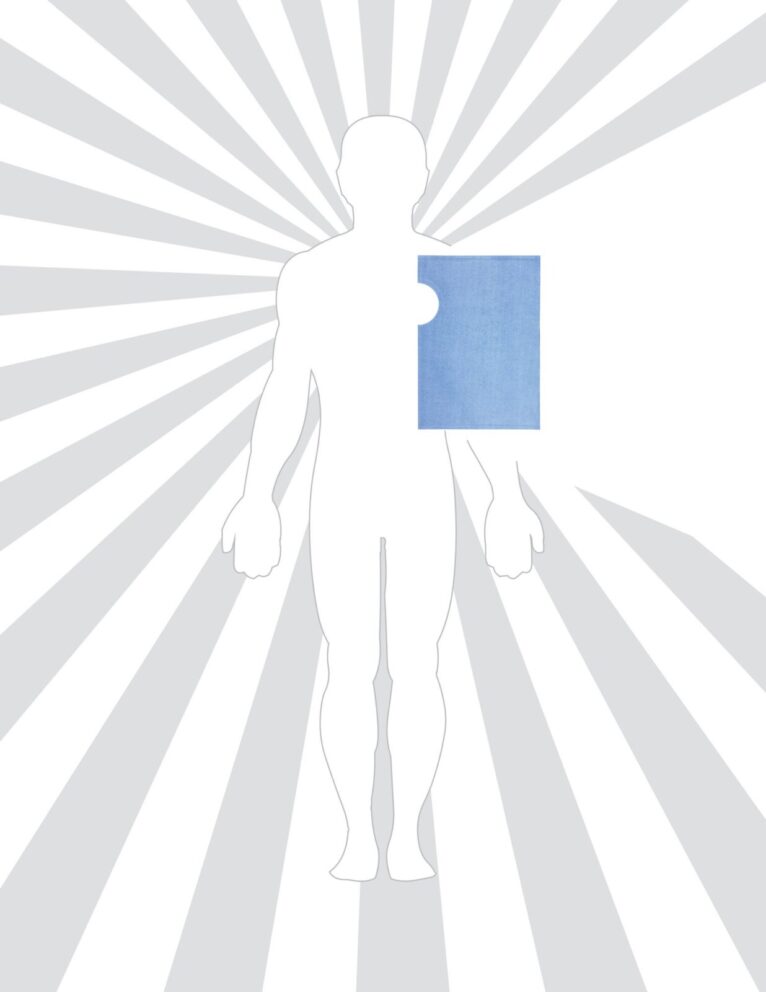
Scatter Armor
EP Shield
Méret: 30,4 x 43,1 cm
Ablak méretei: 8,9 x 3,8 cm
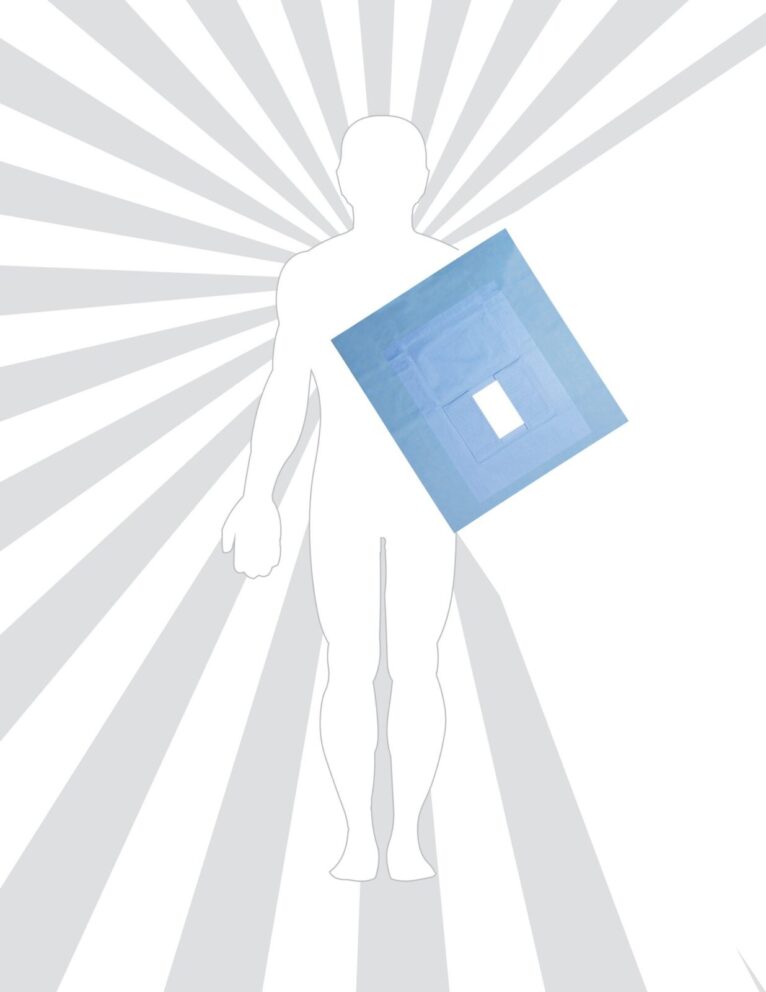
Scatter Armor Dialysis Drape
Méret: 97,8 x 91,4 cm
Ablak méretei: 11,4 x 22,8 cm
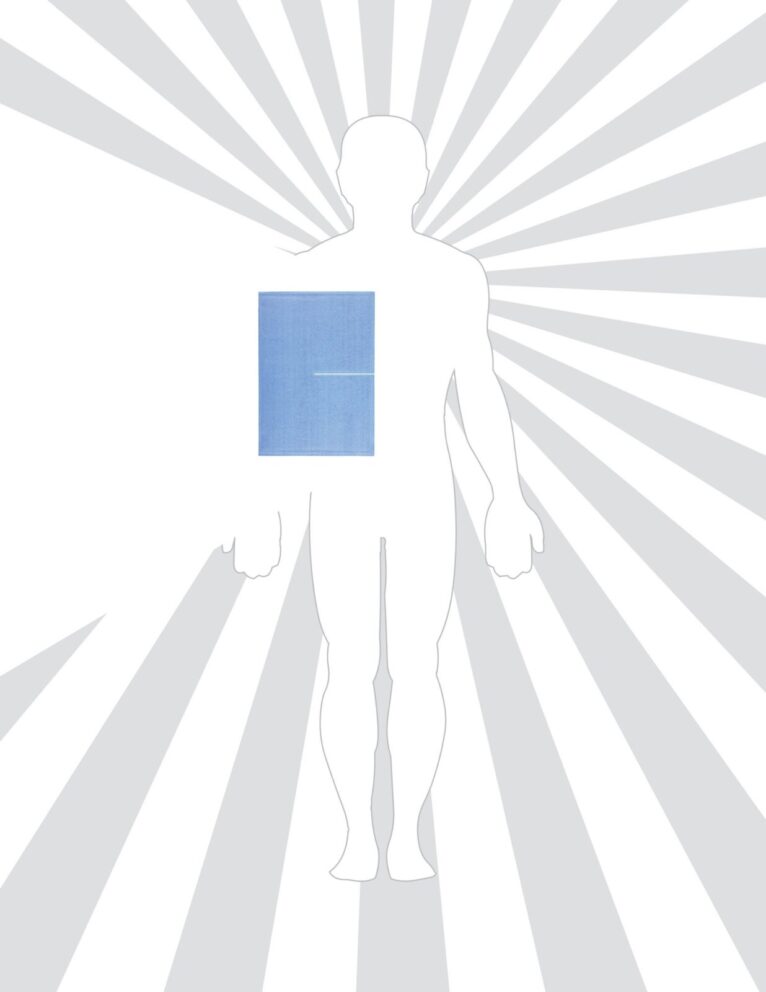
Scatter Armor Biliary Split Shield
Méret: 30,5 x 43,2 cm
Bemetszés hossza: 15,2 cm
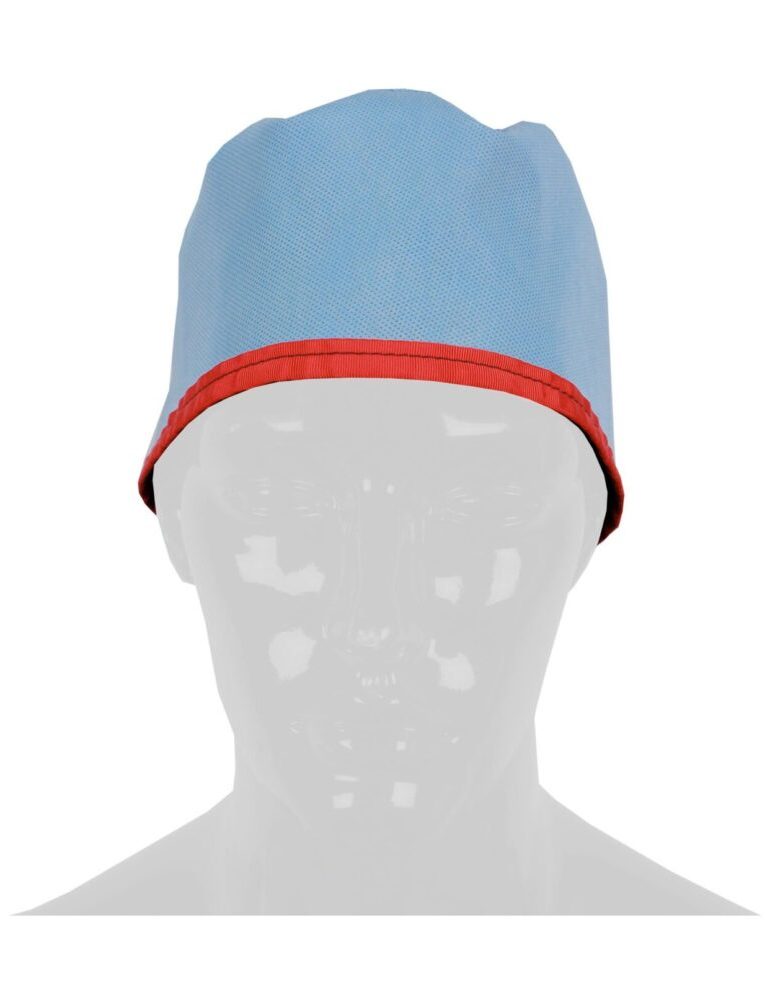
Thinking Cap védősapka
Univerzális méret,
Igazítható
Scatter Armor
Referenciák, hivatkozások:
1. Kloeze, C., Klompenhouwer, E. G., Brands, P. J. M., Sambeek, M. R. H. M. Van, Cuypers, P. W. M., & Teijink, J. A. W. (2011). Editor ’ s Choice e Use of Disposable Radiation-absorbing Surgical Drapes Results in Signi fi cant Dose Reduction During EVAR Procedures. European Journal of Vascular & Endovascular Surgery, 47(3), 268–272.
https://doi.org/10.1016/j.ejvs.2013.12.008
2. Tannahill, G. M., Hindal, M. D., Rt, R., & Mathew, V. (2011). Effective Use of Radiation Shields to Minimize Operator Dose During Invasive Cardiology Procedures. JCIN, 4(10), 1133–1139.
https://doi.org/10.1016/j.jcin.2011.05.027
3. Reeves, R. R., Ang, L., Bahadorani, J., Naghi, J., Dominguez, A., Palakodeti, V., Tsimikas, S., Patel, M. P., & Mahmud, E. (2015). Invasive Cardiologists Are Exposed to Greater Left Sided Cranial Radiation: The BRAIN Study (Brain Radiation Exposure and Attenuation during Invasive Cardiology Procedures). JACC: Cardiovascular Interventions, 8(9), 1197–1206.
https://doi.org/10.1016/j.jcin.2015.03.027
4. Power, S., Mirza, M., Thakorlal, A., Ganai, B., Gavagan, L. D., Given, M. F., & Lee, M. J. (2015). Efficacy of a Radiation Absorbing Shield in Reducing Dose to the Interventionalist During Peripheral Endovascular Procedures: A Single Centre Pilot Study. CardioVascular and Interventional Radiology, 38(3), 573–578.
https://doi.org/10.1007/s00270-014-0997-8
5. Ertel, A., Nadelson, J., Shroff, A. R., Sweis, R., Ferrera, D., & Vidovich, M. I. (2012). Radiation Dose Reduction during Radial Cardiac Catheterization: Evaluation of a Dedicated Radial Angiography Absorption Shielding Drape. ISRN Cardiology, 2012, 1–5.
https://doi.org/10.5402/2012/769167
6. Germano JJ, Day G, Gregorious D, Natarajan V, Cohen T. A novel radiation protection drape reduces radiation exposure during fluoroscopy guided electrophysiology procedures. J Invasive Cardiol.2005 Sep;17(9):469-72. PMID: 16145234.
7. Simons GR, Orrison WW Jr. Use of a sterile, disposable, radiation-absorbing shield reduces occupational exposure to scatter radiation during pectoral device implantation. Pacing Clin Electrophysiol. 2004 Jun;27(6 Pt 1):726-9. doi: 10.1111/j.1540-8159.2004.00520.x. PMID: 15189526.
8. King, J. N., Champlin, A. M., Kelsey, C. A., & Tripp, D. A. (2002). Using a sterile disposable protective surgical drape for reduction of radiation exposure to interventionalists. American Journal of Roentgenology, 178(1), 153–157.
https://doi.org/10.2214/ajr.178.1.1780153